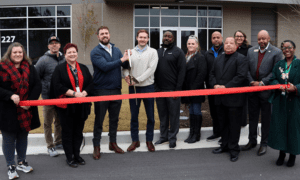Fayette County fell to third place for health status and economic factors among Georgia’s 159 counties as ranked in the Partner Up! for Public Health campaign’s 2013 Power Rankings, the campaign announced earlier this month.
Oconee County, a fast-growing suburban county in northeast Georgia, claimed first place, having tied with Fayette for the top spot in 2012. The new-second place finisher is Forsyth County.
There was, however, a tie at the bottom of the rankings. Crisp and Wilcox counties, which adjoin one another in South Central Georgia, finished in a tie for last place among Georgia’s 159 counties.
Funded by Healthcare Georgia Foundation, the Partner Up! for Public Health campaign has for the past two years compiled and published Health and Economic Power Ratings that combine county-level health outcomes rankings produced by the University of Wisconsin with economic rankings calculated by the Georgia Department of Community Affairs (DCA) in connection with the state’s job tax credits program.
The University of Wisconsin program provides health outcomes rankings for most of the counties in the United States, including all 159 in Georgia, based on a variety of factors, including premature death, the percentage of the population reporting being in poor or fair health, the number of work-days missed for reasons of poor mental or physical health, and the percentage of babies born at low birth weight.
The DCA job tax credit rankings are built on a formula that incorporates average per capita income, the local unemployment rate, and the local poverty rate. Because the purpose of the job tax credit program is to steer jobs to Georgia’s poorest counties, the DCA rankings list counties from worst to best. For the purpose of its analysis, the Partner Up! campaign reversed the DCA rankings to compare it to the University of Wisconsin Health outcomes rankings.
The Partner Up! for Public Health Power Ratings add the resulting economic rankings to the health outcomes rankings and then divide the total by two. As it did last year, Oconee County finished No. 1 in the economic rankings and No. 3 in the health outcomes rankings – producing a Partner Up! Power Rating of 2.
Last year, Fayette County, in the South Metro area, was No. 1 for health outcomes and No. 3 in the economic rankings, tying with Oconee. This year, however, it slipped to 2nd in the health rankings and 5th in the economic rankings, with a Power Rating of 3.5. Forsyth County, in the North Metro area, claimed the top health outcomes ranking and held onto the same 4th place ranking in economics that it had last year to claim an overall 2nd place behind Oconee, with a Partner Up! Power Rating of 2.5.
At the bottom of the Partner Up! rankings, South Georgia neighbors Crisp and Wilcox had very similar health and economic rankings that in turn produced identical Power Ratings of 150.5. Wilcox County came in 155th for health outcomes and 146th for economic vitality. Its adjoining neighbor to the west, Crisp County finished 150th for health outcomes and 151st for economic vitality.
Charles Hayslett, CEO of Hayslett Group LLC, which is managing the Partner Up! campaign, said the purpose of the annual Partner Up! Power Rankings is to spotlight the linkage between health status and economic vitality at a community level and to encourage the state’s leaders to develop policies that recognize and address those relationships.
“One of the things we came to realize early in this campaign is that the State of Georgia really doesn’t seem to have a coordinated strategy for addressing the very difficult challenges facing Georgia’s poorest and least healthy counties,” said Hayslett. “We’ve got some areas of rural South Georgia that are for all practical purposes disaster areas both economically and in terms of health status.”
Hayslett said the contrast between Oconee County at the top of the Partner Up! Power Rankings and Crisp and Wilcox at the bottom of the rankings “should tell us just about all we need to know about this problem and its severity.
“Crisp and Wilcox, side-by-side neighbors in south central Georgia, have a combined population that is just about equal to Oconee’s,” he said. “The 2012 Census estimates put both Oconee and Crisp-Wilcox combined at about 33,000 people, but that’s where the similarity ends. The per capita income in Oconee is double that of Crisp or Wilcox, and the premature death rate in Crisp and Wilcox is more than double Oconee’s.
“Substantially more people in Crisp and Wilcox report being in poor or fair health than in Oconee, and they say they miss more work for reasons of poor physical or mental health,” he added. “And those results are mirrored in health care costs. According to data from the Department of Community Health, Georgia’s total FY 2012 Medicaid spending for Crisp and Wilcox combined was $44.2 million versus $11.2 million for Oconee – for, again, nearly identical populations.
“Our argument isn’t that we need to cut Medicaid spending in Crisp and Wilcox, but we do think the magnitude and gravity of the economic and health crises in certain parts of rural Georgia are such that we need to break the mold and look for a strategy that addresses those and other issues in combination,” said Hayslett. “It seems clear that we are not going to be able to improve the economies of many of these areas without, among other things, improving the health of the populations that reside there, and that will probably require an invigorated and expanded public health effort as well as state-backed efforts to encourage private providers – physicians and hospitals – to go into underserved areas.”












Leave a Comment
You must be logged in to post a comment.